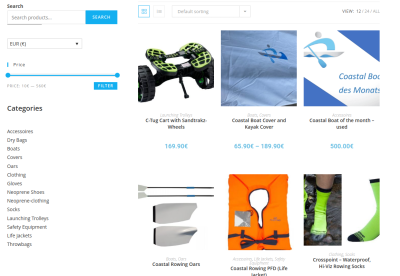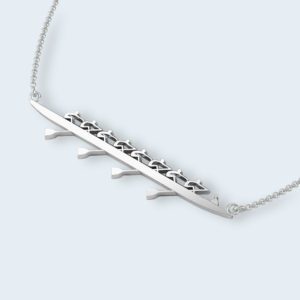I love this question from a reader “How to coach Acceleration over Hammering?”
My answer is until an athlete knows what acceleration feels like s/he will continue to ‘hammer’.
Backing down to the catch drill
Here’s a drill to try. We call it the “Backing down to the catch” exercise.
- Sit your crew so half are not rowing.
- Get the rest sit at 3/4 slide (i.e. nearly at front stops), blades square and buried under the water surface.
- They roll forward until they reach full compression pushing the oar backwards under the water and take one firm pressure stroke and then easy (stop rowing).
This has the effect of the oar being buried in the water at the full compression position and will “lock onto” the water very solidly. It is possible this will be the first time ever in their rowing careers these athletes actually take a complete, full stroke without missing any water!
Because the boat is stationary when they start rowing, and half the crew is sitting idle they are carrying a big weight and so cannot move fast (hammering) without ripping the oar through the water. They will hear this. You can get them to try to move fast and most will make a big splashy wave in the water and the boat will not move away fast.
Get them to do this drill about 5 times. Each time firm pressure. Then switch to the other half of the crew.
Advanced version of the drill
Now for the more skilled version of the Backing down to the catch exercise.
- Get half the crew to do the drill again – but after the first stroke they row continuously in the normal way.
- Explain to them that as the boat gets faster, they should be trying to get the same feeling of grip on the water at the catch every stroke. This will be progressively more difficult as the boat gets moving. If they grip and then press their legs down so they don’t rip the water block, they will get the feeling. If they hammer or miss the catch by being late or having their oar spoon too high off the water, they won’t get the feeling.
- When you see that they are beginning to fail to grip the water, stop them. Stop the boat completely and then start again, with the first stroke backing down to the catch and then follow with continuous strokes.
When they get more skilled, you can get the whole crew to row together without anyone sitting idle. This is harder because without the dead weight it takes more skill to grip the water at the catch because the boat is moving faster through the water.
If you want to practice something similar on the ergo – just jack up the resistance to 10 and have them row a low stroke rate. By increasing the load, they cannot move so quickly and so will hopefully move their leg drive progressively and not hammering.
Let us know how you get on.








This Post Has 3 Comments
I have done this drill with the addition of standing off the seat at the first stroke after backing down. That forces all the drive into the legs and prevents hammering. Good for demonstrating the feeling of gripping the water and locking on with the added benefit of not drawing in the arms too early.
Valerie
That’s a great idea addition to the drill.
Which crews are you coaching this year? Juniors or seniors?
Rebecca
Thanks Rebecca. In my mind’s eye (should highlight, I scull in a single) this seems like a fully forward, fully compressed regatta start? Where most folks would go to half-slide in a racing start, they’re squeezing up tighter in this version?
I think, even without doing the exercise I can predict what it’s going to feel like: an even more extreme version of how the first stroke in a regatta-start feels. And when you do a real hard regatta-start it’s pretty difficult to get the blade out of the water at the finish. The “locking in” and “grip” of the blade on the water is so intense… It gets easier as the boat speed increases…
For me, in a single, it’s also alarming. The power feels great – it’s the finish of that first stroke that’s scary… That’s where the biggest danger of a swim exists…
Do you have any advice for single-scullers to do this drill (that is, without falling in!). I think going from a fully compressed front-stops position is going to make it even more scary to get the blades out at the finish? But I can see the feeling of the stroke will be very satisfying 🙂